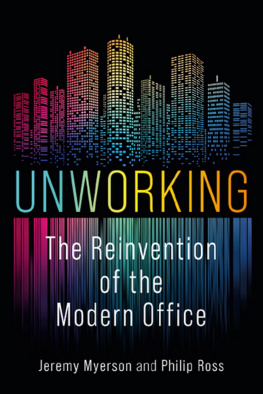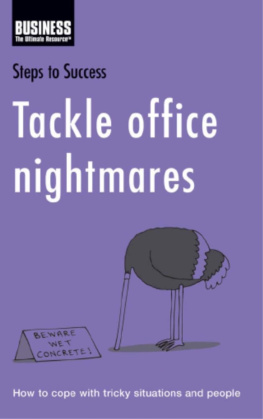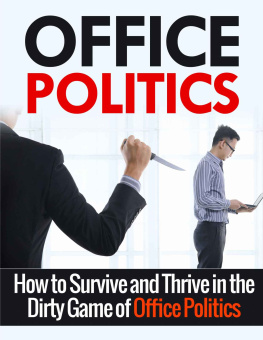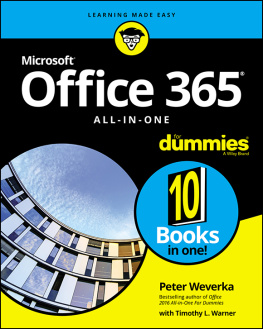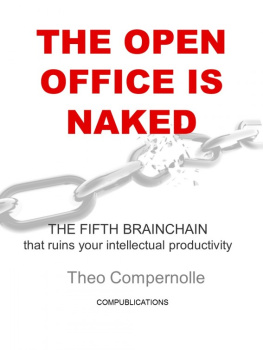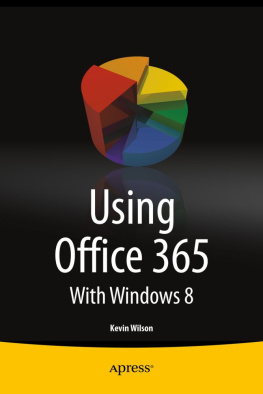This book could not be more timely as the world grapples with what the post-pandemic workplace should look like. Jeremy Myerson and Philip Ross give us a scholarly yet deeply engaging account of the past, present and future shape of the office. Essential reading for those planning the new office environment and anyone whos going to have to live in it.
Rory Cellan-Jones, former BBC News technology correspondent and author of Always On: Hope and Fear in the Social Smartphone Era
A must-read for understanding the forces that influence how we work. Myerson and Ross expertly examine the facets reshaping the office landscape with a view into Whats Next. Unworking is an invaluable guide for anyone interested in the workplaces needed to help people thrive.
Harald Becker, Director of Customer Engagements and Insights, Microsoft
The pandemic has dramatically changed the way we work and how we work. Unworking is a fantastic and highly readable book, providing a pathway for the new world of work and the office environments of the future. This is a must read for senior executives and many others in navigating the opportunities for future workplaces you wont regret it!
Sir Cary Cooper CBE, 50th Anniversary Professor of Organizational Psychology and Health, University of Manchester
Brimming with ideas, insights, examples and wisdom, this is the go-to book for everyone interested in the future of the office and curious about the future development of work.
Lynda Gratton, Professor of Management Practice, London Business School, and best-selling author of Redesigning Work
To challenge the status quo so that new thinking can emerge, we have to be able to hold both a strong grasp of how we got here, and a deep understanding of the forces that are driving the need for change. Philip Ross and Jeremy Myerson have a wealth of experience and insight in both these areas. They are also consummate communicators: their manifesto is unputdownable, at turns scary and exhilarating, a thrilling invitation to create work and workspaces that work for all.
David Firth, consultant, coach and author in Organizational Development
Philip Ross and Jeremy Myerson capture the most significant changes in the world of the office for decades. Their understanding of the social, economic, technology changes and the roles of home and office is unsurpassed.
Sir Stuart Lipton, Lipton Rogers Developments
This compelling, well-written book provides a historical perspective on the world of work, as well as a forward-thinking outlook on how to navigate its impact on our lives. Leisure and work are evermore intertwined, and Unworking gave me moments of insight that I can act upon both at work and in private. A joy to read.
Cees de Bont, Dean of the School of Design and Creative Arts, Loughborough University
Unworking takes you on panoramic journey, arriving at a plausible, evidence-based future of how work and the workplace will evolve. Rigorous and readable, it offers a better understanding of how we can reinvent the workplace taxonomy.
Alessandro Ranaldi, Head of Workplace Consultancy, Foster + Partners
UNWORKING
The Reinvention
of the
Modern Office
Jeremy Myerson and Philip Ross
REAKTION BOOKS
For Katy, Ollie and Josh
For Wendy, Matthew and Nathan
The future is more exciting than the past
Published by
Reaktion Books Ltd
Unit 32, Waterside
4448 Wharf Road
London N1 7UX, UK
www.reaktionbooks.co.uk
First published 2022
Copyright Jeremy Myerson and Philip Ross 2022
All rights reserved
No part of this publication may be reproduced, stored in a retrieval system, or transmitted, in any form or by any means, electronic, mechanical, photocopying, recording or otherwise, without the prior permission of the publishers
Page references in the Photo Acknowledgements and
Index match the printed edition of this book.
Printed and bound in Great Britain by TJ Books Ltd, Padstow, Cornwall
A catalogue record for this book is available from the British Library
eISBN 978 1 78914 667 7
Contents

Easter Sunday crowd on Fifth Avenue, New York City, c. 1925. The modern office emerged as a central part of city life in the 1920s.
Introduction: Unlearning
I f you were to step back into the working world of one hundred years ago, you would see the modern office in full swing. All the pieces were in place, the whole show was in town, whether that town was New York, Chicago or London. Against a background of rapid urbanization, the early 1920s brought together key elements of office life: the industrial technologies of the typewriter, telephone, light bulb, telegraph, vertical filing cabinet and adding machine that enabled vast bureaucracies to process information for set hours, under the steely gaze of time-and-motion supervisors; the tall buildings with fast elevators that reshaped the cityscape as real-estate prices sky-rocketed; the designer-modernist and engineer-management theories that signalled speed, efficiency and progress; the new transport systems above and below ground that ferried people to their places of work from further and further afield.
Today, a century later, our working world presents clear similarities. Against a background of hyper-urbanization, people have been crowding onto public transport systems and clogging up motorways, suburban freeways and city-centre streets trying to get to and from work within set, synchronous hours. More tall buildings than ever litter our skylines, although some have been rebranded vertical villages. A small set of dominant technologies digital now rather than industrial and analogue continues to occupy the workforce. Efficiency theory remains surprisingly durable among business managers, and the wheels of the economic growth model continue to turn, albeit in stop-start motion as a series of crises shock the system, the COVID-19 pandemic the most serious among them. On the face of it at least, one could be excused for asking: what has really changed?
Yet behind the eerily familiar facades of our working infrastructure, the modern office, as forged in the crucible of the early twentieth century, is fast being dismantled and reassembled in all its principal parts. We are witnessing the swan syndrome in workplace change: what looked on the surface to be a smooth evolution of the working practices, technologies and ideas first implemented one hundred years ago is, below the waterline, a deep disruption to our way of working and were paddling like crazy to keep up as the modern office is completely reinvented. Some of this reinvention can be traced to industrial obsolescence, new theoretical knowledge or changing management fads in a field prone to faddishness. But a significant part of it, especially in the two decades since 2000, can also be attributed to economic shocks, such as the global banking crisis of 2008, environmental shocks, such as the ongoing climate change emergency, and the public health shock of COVID-19, which sent the worlds major cities into extended lockdown in 2020, instigating a giant involuntary experiment in remote working, the effects of which are still being played out.
In absorbing these shocks, it is evident that the people who own, plan, build, design, manage, supply, invest in and occupy our offices are being required to relearn pretty much everything they thought they knew about the working world. As we re-adjust and redefine the new world of work, this unlearning and relearning of the modern office in all its facets is the subject of this book.

